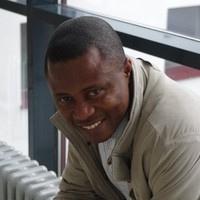
Recruiting for advancement
Victor Dugga, Federal University Lafia, Nigera
There is always risk associated with recruiting new staff, but you can minimise this risk with careful thought about the office structure (and how it will develop over time), staff roles, characteristics and expectations – and how your structure and staff will realistically meet your strategic goals.
Understanding qualifications that match your office structure
As you determine your office structure and the specific activities that you want each staff position to accomplish, make sure you are thinking about the different qualifications and characteristics needed for the two major aspects of development work:
For external relations (e.g., fundraising, alumni relations, events organisation, business development and communication)
Qualified candidates should be good listeners and conversationalists. They need to be interested in other people and able to communicate engagingly on a wide range of topics and with a diverse range of people. They need an ability to manage multiple relationships at a high level and also require a good memory for detail. They should be diplomatic and socially confident. They also need to have the courage to be able to make ‘the ask’ and the finesse to know when to make it.
For operational activities (e.g., data management, financial processing, prospect research and administration)
Qualified candidates are technically skilled, process driven and with excellent organisational skills that enable them to cope with large volumes of information. At the same time, they need to have the sensitivity and analytical insight to spot interesting trends and facts within the data they process and to share these with their externally focused colleagues.
These two aspects of development need to be able to work well together.
Writing a job description and person specification
The more detailed and specific you can be in your job descriptions and person specifications the more likely you are to find the candidates you need. Think about what tasks you need a role to fulfil in order to meet your strategic goals, and break these tasks down into specific activities.
Person specifications should be split into the characteristics you find essential and those you find desirable. Again, the more specific you can be, the fewer unsuitable applications you will have to sift through.
Getting help
Recruitment can be a daunting task. There are several places where you can find help both in formulating your recruitment strategy and in the recruitment process.
Your institution’s human resources office will be able to help you draft job descriptions, calculate appropriate levels of salary and oversee the recruitment process. You can also get help from CASE, professional industry networks and specialist recruitment agencies.
If you are new to advancement, you will find it helpful to talk with established directors of development in other institutions. They will be able to share their own experiences with you and may even agree to sit on interview panels.
Where and how to find your new staff
Development professionals come from a wide variety of backgrounds – higher education, the charity sector, sales and marketing, PR and communications among others. You should look for individuals with the right skills even if they have little experience of your sector.
You can search for staff through the traditional routes of advertisements and recruitment agencies, but it is also worth using your own professional networks, such as LinkedIn, Facebook and relevant online discussion lists. Also keep in mind that you can attract strong candidates both from your own country and overseas.
Do not forget that you may have strong candidates on your own doorstep in other areas of your institution. You may be inheriting staff members who were working on development-related activities before there was an official office, or there may be staff members that are well-versed in communications or institutional operations who are looking for a new opportunity. The human resources office should be able to help you identify (or place) internal staff members into the structure and roles that you have defined.
Setting up your staff for success
To provide your staff with a strong basis to succeed, ensure that honest and open discussions form part of the recruitment process. Be clear, not only about the skills desired and expectations of the role, but also about the status of development activities at the institution and resources available. Also, make sure there is an early induction programme in place.